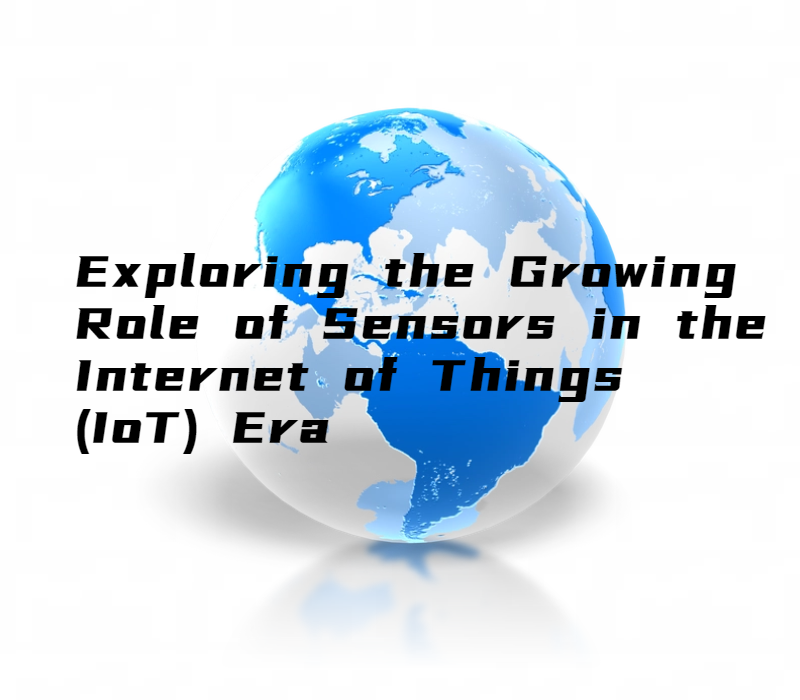Введение: расширяющийся мир датчиков в Интернете вещей
В сегодняшнем быстро развивающемся технологическом ландшафте Интернет вещей (IoT) производит революцию в отраслях и повседневной жизни. Ключевым элементом этой трансформации является широкое использование датчиков, которые действуют как «глаза и уши» систем IoT. Датчики собирают данные из физического мира и преобразуют их в информацию, которую могут понимать машины, что позволяет принимать более разумные решения и автоматизировать процессы. По мере того, как экосистема IoT продолжает расширяться, датчики становятся все более разнообразными и специализированными, что приводит к появлению множества решений, которые отвечают конкретным потребностям в различных отраслях.

Типы датчиков, лежащих в основе революции Интернета вещей
Датчики теперь являются неотъемлемой частью устройств IoT, и их типы постоянно растут, чтобы соответствовать требованиям различных приложений. Давайте рассмотрим некоторые из наиболее часто используемых датчиков в системах IoT:
Датчики давления: эти датчики контролируют уровни давления в жидкостях, газах или твердых телах и используются в таких отраслях, как автомобилестроение, аэрокосмическая промышленность и производство.
Датчики температуры: Датчики температуры, необходимые во многих приложениях Интернета вещей, предоставляют критически важные данные для таких систем, как HVAC, системы хранения продуктов питания и промышленные машины.
Датчики силы: используются для измерения силы или нагрузки, приложенной к объекту, эти датчики используются в робототехнике, медицинском оборудовании и на производстве.
Датчики газа: эти датчики обнаруживают такие газы, как кислород, углекислый газ или вредные выбросы, обеспечивая безопасность в таких средах, как заводы, больницы и умные дома.
Датчики расхода: Датчики расхода контролируют расход жидкостей или газов, что имеет важное значение для таких отраслей, как очистка воды, сельское хозяйство и энергетика.
Датчики положения: эти датчики отслеживают положение объектов в пространстве, предоставляя точные данные о местоположении для таких приложений, как робототехника, автоматизация и отслеживание транспортных средств.
Роль датчиков в приложениях на базе Интернета вещей
Датчики играют ключевую роль в повышении эффективности приложений IoT в различных секторах. Вот несколько примеров того, как датчики способствуют решениям на основе IoT:
Умные дома: В умных домах датчики температуры, движения и газа работают вместе, чтобы контролировать домашнюю среду, обеспечивая комфорт, энергоэффективность и безопасность. Например, умные термостаты используют датчики температуры для регулировки отопления и охлаждения, а газовые датчики могут обнаруживать утечки угарного газа или природного газа.
Здравоохранение: медицинские устройства на базе Интернета вещей, такие как носимые устройства для измерения состояния здоровья и медицинское оборудование, используют различные датчики для отслеживания частоты сердечных сокращений, температуры и движений, предоставляя данные в режиме реального времени как пациентам, так и медицинским работникам.
Промышленная автоматизация: Датчики давления, расхода и силы имеют решающее значение в таких отраслях, как производство, нефтегазовая и химическая переработка. Эти датчики обеспечивают непрерывную работу машин, выявляют потенциальные сбои на ранней стадии и повышают общую эффективность системы.
Сельское хозяйство: датчики в сельскохозяйственных системах на основе Интернета вещей контролируют влажность почвы, температуру и здоровье сельскохозяйственных культур, позволяя фермерам оптимизировать орошение, сократить потребление воды и повысить урожайность.
Основные преимущества датчиков в экосистеме Интернета вещей
Интеграция датчиков в экосистему IoT приносит несколько ключевых преимуществ как компаниям, так и частным лицам. Эти преимущества преобразуют работу отраслей и повышают качество повседневной жизни:
Повышенная эффективность: Датчики обеспечивают автоматизацию, позволяя принимать более быстрые и точные решения. Это приводит к оптимизации использования ресурсов, сокращению простоев и повышению производительности в различных отраслях.
Данные в реальном времени: с помощью датчиков Интернета вещей данные можно собирать и обрабатывать в режиме реального времени, что позволяет предприятиям мгновенно получать информацию о работе и принимать своевременные меры.
Экономия средств: предоставляя информацию о производительности системы, датчики помогают выявлять неэффективность, предотвращать сбои и сокращать потребление энергии, что приводит к значительной экономии средств.
Повышение безопасности: в таких средах, как заводы и больницы, датчики обеспечивают раннее предупреждение о потенциальных опасностях, таких как утечки газа или колебания температуры, помогая защитить людей и имущество.
Будущее датчиков в мире Интернета вещей
По мере развития технологий IoT будет развиваться и роль датчиков. В ближайшие годы мы можем ожидать появления еще более совершенных датчиков, которые будут более точными, энергоэффективными и способными отслеживать новые переменные. Интеграция искусственного интеллекта (ИИ) и машинного обучения (МО) с датчиками также обеспечит больше возможностей прогнозирования, позволяя системам не только реагировать на данные, но и предвидеть и предотвращать проблемы до их возникновения. Кроме того, миниатюризация датчиков и достижения в области беспроводной связи еще больше повысят универсальность и доступность приложений IoT.
Заключение:
В эпоху IoT датчики являются основой интеллектуальных систем, предоставляя важные данные, которые обеспечивают автоматизацию, улучшают принятие решений и улучшают пользовательский опыт. От умных домов до промышленной автоматизации датчики преобразуют широкий спектр отраслей, обеспечивая ощутимые преимущества, такие как повышение эффективности, мониторинг в реальном времени и экономия средств. По мере того, как ландшафт IoT продолжает расширяться, датчики будут продолжать развиваться, позволяя создавать еще более сложные решения, которые формируют будущее подключений, автоматизации и интеллекта.
